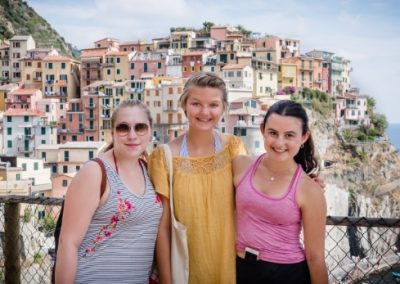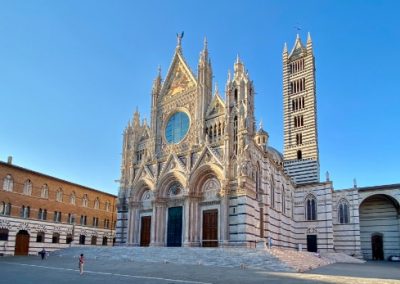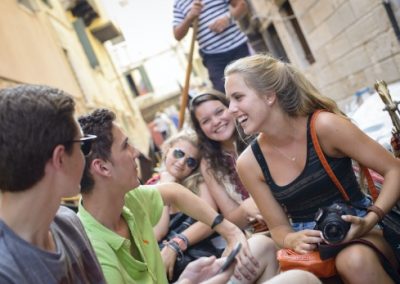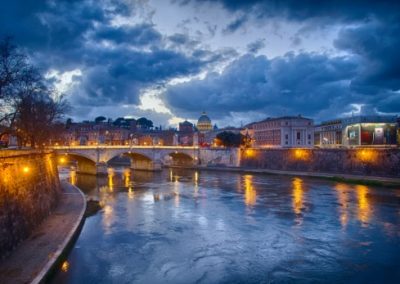Smithsonian Student Travel | Greece & Italy
Dive into the history and traditions of Greece and Italy, home to vibrant ancient civilizations and rich modern cultures, on this high school summer program in the Mediterranean. Travel from sun-drenched seaside villages and tranquil farms to bustling cities and ancient temples, as you explore the legacy of the Greek and Roman empires. Watch history come alive in five locations—Athens, Crete, Santorini, Naples, and Rome—that are steeped in myth and history, and boast stunning landscapes. Travel by ferry from Crete to Santorini as you contemplate Homer’s Iliad and Odyssey; climb the steps of the Acropolis above Athens; and follow the influences of ancient Greece into Italy, where the Roman Empire furthered the evolution of Western Civilization. Stroll the ancient streets of Pompeii or Herculaneum, while taking in views of the imposing Mount Vesuvius, and imagine the eruption that tragically buried those Roman cities. Experience how history and the present coexist in Rome, where Renaissance architecture and Roman ruins are integrated in a dynamic modern city.
Highlights
-
Swim in the turquoise Mediterranean Sea off the Island of Crete
-
Sail below the cliffs of Santorini and examine the legend of Atlantis
-
Explore the archaeology at Pompeii and contemplate the eruption of Vesuvius
-
Imagine gladiatorial combat in the cavernous Roman Colosseum
Itinerary
This itinerary represents our plan for the program. However, we may implement changes if we identify opportunities to improve the experience, to take advantage of unexpected events, or to accommodate local schedule changes.
Athens • 2 days • Settle into our comfortable hotel overlooking the Acropolis and begin your adventure with an introduction to ancient Greece. Get to know your group and leaders, and explore the city’s sites and archaeological museum.
Crete • 4 days • Board a ferry from Athens to Crete, the largest island in Greece and birthplace of the ancient Minoan civilization. Hike Mount Ida, the island’s highest mountain, and sample local cheeses and seafood. Explore the Psychro Cave, mythical birthplace of Zeus, and take a refreshing swim from the rocky shoreline at the end of the day.
Santorini • 3 days • Travel by ferry to Santorini, sometimes believed to be the basis for the legend of Atlantis. Spend the next four days exploring the picturesque villages of Fira, Oia, and Imerovigli, and hike above the blue water of the caldera at the center of the island. Take a sunset sail below the cliffs, discover hidden swimming beaches, and visit the ancient ruins of Akrotiri, a village buried in a 16th-century B.C. volcanic eruption.
Naples • 3 days • Fly from Santorini to Naples and explore the ancient cities of Pompeii or Herculaneum, two sites buried with volcanic ash in 79 A.D. Study the richly preserved objects and living spaces of daily life in the first century, stroll their cobbled streets, and meet with archaeologists who continue to unearth beautiful mosaics from beneath the ash. Take a day trip to the island of Ischia to relax in thermal baths with idyllic Mediterranean views and get a taste of authentic Italian culture while strolling through quaint seaside villages.
Rome • 5 days • Next, travel north to Rome, where the ancient world coexists with Italy’s vibrant present. Alongside your Smithsonian Student Travel Expert, come face-to-face with Imperial Rome in the ruins of the Forum and the Colosseum. Create your own mosaic in traditional Roman style, learn how to make Rome’s famous cacio e pepe, and interview contemporary Romans about their lives in this fascinating city. Spend evenings at an outdoor concert, practice your Italian at produce markets, and picnic along the river as you contemplate the role of these ancient civilizations in your own modern lives.
Return • Travel Day • Fly from Rome, Italy, to New York with your group and a trip leader, then continue on to your final destination.
Smithsonian Student Travel Experts
The experts highlighted below are examples of professionals that will join the group at various points throughout the itinerary to add their expertise and insight to the program theme.
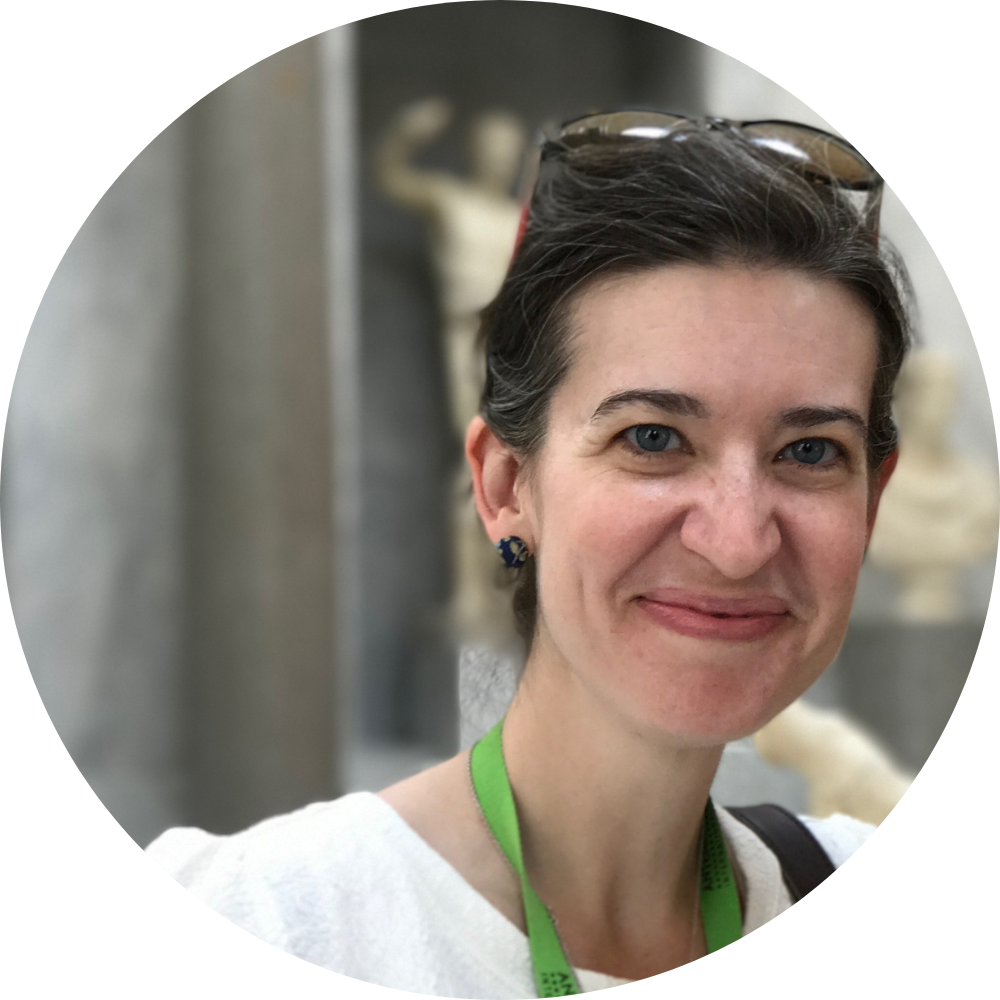
Ashley Elston, Art Historian
Ashley Elston is an art historian who specializes in late medieval and Renaissance art in Italy. She is Associate Professor of Art History and Director of Visual Arts at Berea College, where she teaches a variety of courses on European art from the ancient world to the 19th century. She discovered her love of Italian art and culture as an undergraduate working on a degree in history and medieval studies at St. Olaf College when she participated in a study abroad course in Rome. She went on to complete an M.A. and Ph.D. in art history at the University of Kansas. A Fulbright grant allowed her to live in Italy while conducting her doctoral research in churches, archives, and museums, and her work has also been supported by competitive grants from the Renaissance Society of America and the Southeastern College Art Conference. She is currently working on a book that examines how paintings and sculptures were used together on Italian Renaissance altars and recently co-edited a book titled Hybridity in Early Modern Art.
Ashley will be joining the June 18 departure of the Greece & Italy program.

Cris Corrado, Professor
Professor Cris Corrado has spent her entire career creating, leading and teaching academic programs in Italy and Greece. A classical archaeologist specializing in Roman Art, Professor Corrado has taught university students in Rome for the past 20 years. She has worked in a curatorial capacity in the departments of ancient art at the Smart Museum of Art at the University of Chicago, the RISD Museum, the Museum of Fine Arts, Boston, and the Vatican Museums. For several summers, she was also involved with research projects and excavations at Pompeii.
Her research interests and publications focus on ancient Greek and Roman wall painting and sculpture, as well as funerary and domestic architecture. Professor Corrado is currently working on an exciting project that aims to identify and correctly categorize aedicular tombs and statues in the ancient Roman landscape. She presents guest lectures on the topic, and her co-authored article on a related topic, the Monument of Eurysaces, will be published this summer. She is also co-authoring a textbook on ancient Rome. Professor Corrado is the founder of the Rome Society of the Archaeological Institute of America.
Cris will be joining the July 2 departure of the Greece & Italy program.
What to Expect
Accommodations • We stay at small family-run inns and hotels, and leaders stay with students throughout the program.
Climate • Summer temperatures in Italy and Greece can be very warm, with daytime highs in the 80s and 90s °F in the south, and 70s and 80s °F in the north.
Meals • We begin each day with breakfast at our residence, and enjoy lunches and dinners at small, local restaurants and cafes, or picnic-style in parks and on waterfronts.
Cuisine • Traditional Greek and Italian cuisine is characterized by its simplicity and varies greatly by region. In both countries, common meals include pastas, pizzas, rice dishes, stews, cheeses, fish, cured meats, soups, and salads. Greece and Italy are also home to thriving international communities, and food from around the world is also available.
Language • Modern Greek is the official language of Greece. Italian is the official language of Italy, though each region often also has its own dialect. English is also spoken in larger cities.
Enroll in two programs & save $500!
$300 tuition discount + no second application fee


